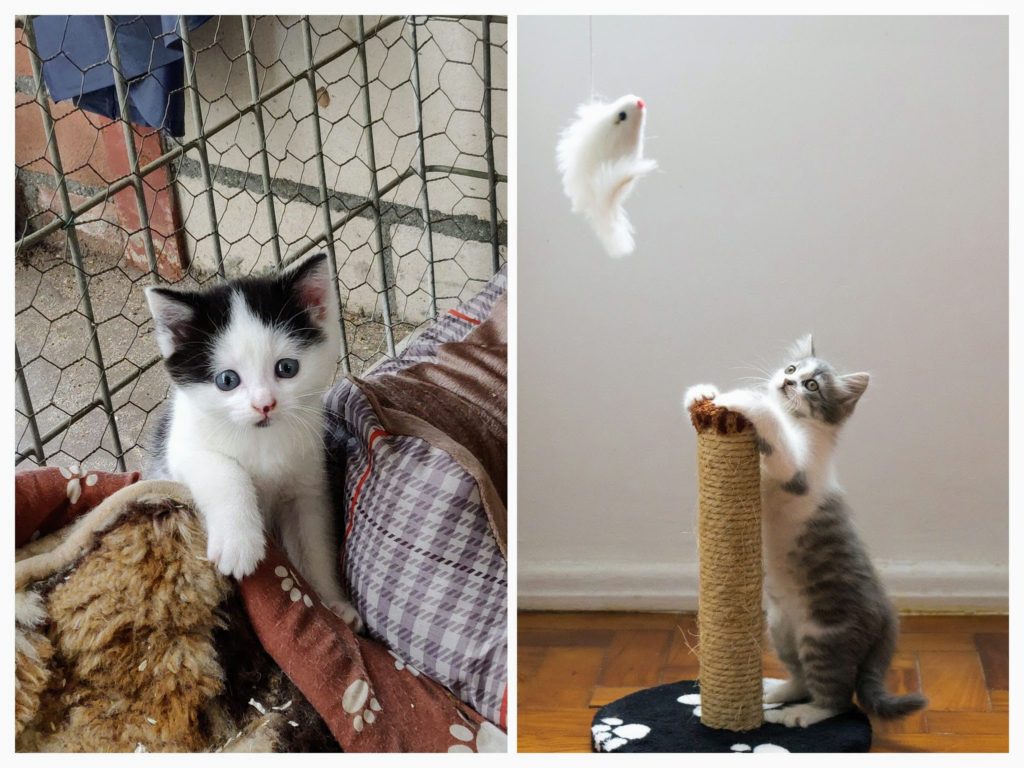Don’t be cruel to kittens…or children
An experiment involving two kittens took place in a lab in the early 1960s (1). The kittens were put on a small carousel that rotated with a view of the lab. Kitten A could move its feet and the carousel spun as it walked. Kitten B was suspended in a box that rotated to give the same view of the lab that Kitten A had. Kitten B’s little paws never touched the box. He just hung and rotated.
When the kittens were released, Kitten A could navigate its surroundings and move around obstacles. Kitten B kept bumping into things and had no sense of body awareness. Poor kitty…
If you have any sense of empathy you will feel for poor Kitten B. You might even feel outraged and think, ‘how dare they?’ You might jump on Facebook to ‘dislike’ the research scientists.
Rightly so? Kittens need to be able to explore and search and learn about the environment so that they can cope in the real world.
And yet….
- Do you drive your child to school?
- Do you drive your child from one organised activity to another?
- Are you a Head Teacher that reduces break times and disallows playground games because of ‘health and safety’?
If you have said, ‘yes’ to any of the above, then you are replicating the kitten experiment with your child.
They are likely to grow up like Kitten B: not understanding where their body is in space and how to manipulate it around and over obstacles.
I see this all the time when young children are brought to our gymnastics club. Some have great movement awareness (not specific gym skills) and can coordinate their arms and legs. Others look like they have never been outdoors or walked further than TV to fridge and back.
You wouldn’t do it to a kitten, so why are you driving your child to a school when they could walk, cycle or take the bus which at least requires them to walk to the bus stop?
Parents say things like, ‘oh, she’s naturally uncoordinated‘.
I believe that coordination, rhythm, timing, physical strength and balance can be taught and developed in EVERY child. If they are given the right opportunity, shown some ideas and allowed to explore in their own time: just like Kitten A.
But what about P.E.?
Are you a P.E. teacher that forces children to sit in queues and listen to your lectures?
A recent study in the UK for year 7 and year 8 pupils showed that they were only ‘moderately’ or ‘vigorously’ active for 30% of the time in their PE lessons. That means for 70% of the limited time that they are in P.E. they are not ‘doing’.
P.E. teachers: take a hard look at yourselves and change what you are doing. Rounders and cricket are standing around activities. Easy to put on the curriculum and easy to supervise but they are doing little to nothing to help children develop physical skills.
The problem is that P.E. teachers are unaccountable for the physical skills and fitness of the children at school. There are no mandatory tests or guidelines like there are for maths and English. The exception is swimming.
Instead, P.E. departments are measured on their GCSE (academic) results that only a few pupils undertake. Or, they hide behind a competitive sports fixture list that keeps the teachers busy but only a minority of pupils undertake.
Solutions.
It’s not about money, resources and facilities. It’s about imagination, purpose and consistency.
- Encourage children to walk (skip, hop, gallop) to school: parents can then get some exercise too.
- Have local parks with safe bicycle and walking access (ditto).
- Develop physical education lessons that physically educate the children rather than trying to emulate adult-organised sports.
- Stop following lesson plans that say, ‘Today is cricket, explain the rules and organise a game’ that results in two children doing lots of things and the rest standing around getting bored. Instead; use one of Andy Stone’s warm-ups for 5-7 minutes before each lesson to help develop their physical literacy.
Then do some general skill and games work that involves pairs and threes rather than 15-a-side and finally have a cricket tournament at the end of the lesson block.
Or, do nothing and watch our children end up like poor little Kitten B.
References
1 Held, R., & Hein, A. (1963). Movement-produced stimulation in the development of visually guided behavior. Journal of Comparative and Physiological Psychology, 56(5), 872–876 https://doi.org/10.1037/h0040546
2. Beale N, Eldridge E, Delextrat A, et al. Exploring activity levels in physical education lessons in the UK: a cross-sectional examination of activity types and fitness levels. BMJ Open Sport & Exercise Medicine 2021;7:e000924. doi:10.1136/ bmjsem-2020-00092


Thx James! Couldn’t agree more, going this way requires a big effort for most parents who might say “I haven’t got time for that” but with little changes there’s room for big improvement. You do a great job in providing simple tools to change long life established habits. Love the video.
Thanks very much, Patricia. Glad you find it useful.